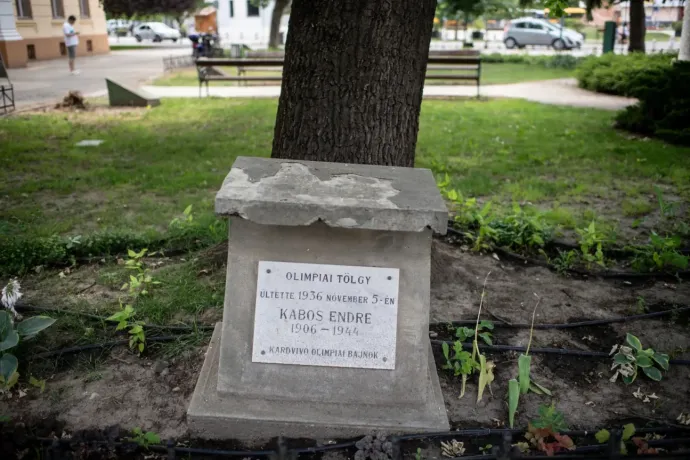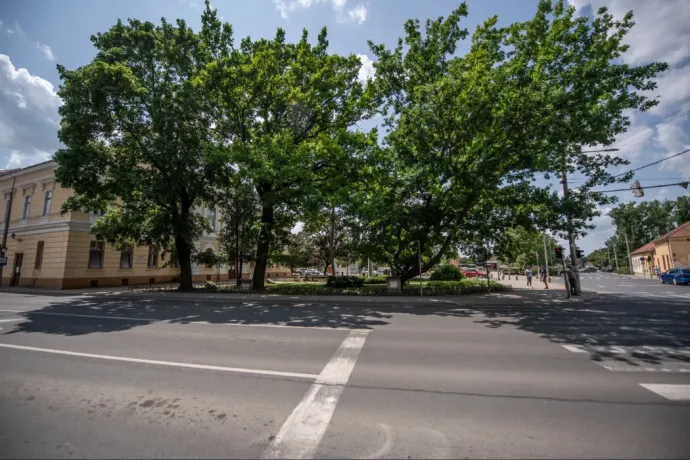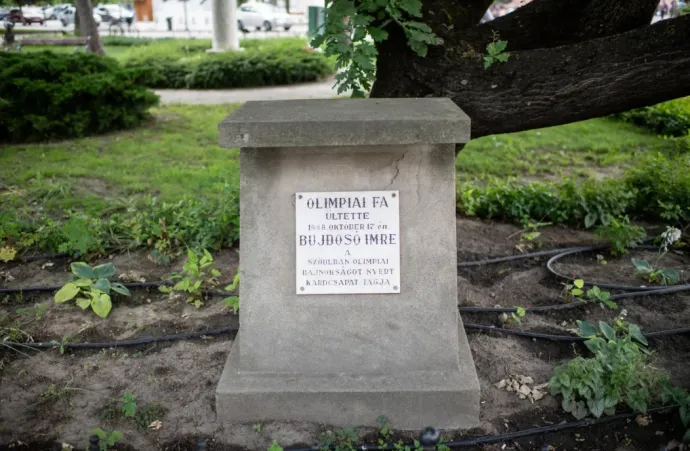The Hitler oaks – some of the few such trees left in world are national treasures of Hajdú-Bihar County

The champions of the 1936 Berlin Olympics received a unique gift: along with their gold medals, they were given one-year-old English oak trees (Quercus pedunculata) measuring 50–70 centimetres in height. The idea was conceived by Hermann Rothe, a gardener from Zehlendorf, and approved by the Olympic organizing committee, who felt that the champions could take home with them an excellent symbol of German character and strength, power and hospitality. In addition, they intended for a majestic, vigorous oak tree to perfectly symbolize the permanence of the champion's success. In many countries, these were called Hitler oaks, after all, it was the chancellor's reward that the victors took home.
"Grow in the glory of victory – and call for further action!"
– according to an article in Spiegel, this is what was written on the ceramic pots which contained the seedlings. 130 gold medals were awarded at the 1936 Olympics, with the winners of the team competitions receiving only one oak tree per team. Hungary finished the Berlin Olympics with ten gold medals, and the champions brought the trees home with them, where they were all planted.
Four of them are still in good condition nearly ninety years later, at the time of writing this article, two of which ended up in Hajdú-Bihar County. Endre Kabos, winner of the individual sword competition, was born in Nagyvárad, but spent a lot of time with his grandparents in Berettyóújfalu, and as a token of his gratitude, he donated his tree to the town, which can still be seen today in Kálvin Square. He probably hesitated about where to plant his tree, because the planting itself did not take place until November 5 in Berettyóújfalu.

Kabos, originally named Endre Katz, was the most successful Hungarian competitor at the Berlin Olympics, winning both the individual and the team competitions. He is one of the champions who met a tragic fate, although the circumstances of his death remain unclear to this day. He may have been on the tram that was crossing Budapest's Margit Bridge when the Germans blew it up. It is also possible that he died near the explosion – the only thing that is certain is that he was a victim of the 2nd World War.
The tree has been under protection since 1986. As head gardener Attila Nagy pointed out, this measure has imposed restrictions on the municipality itself, because if any development or investment project is launched, the oak tree will receive special treatment. Protecting trees is always important, especially when there is such a special tree near the main square.
Since 1988 Olympic champion Imre Bujdosó was also born in Berettyóújfalu and also won in fencing, he planted a tree next to the 1936 oak.
"Their symbolic value is also important, as it raises public awareness. Even the older tree is not ancient, it is in excellent condition. Neither of them is threatened by drought, as the flowers in the square are watered regularly. They do not need any special care other than that required for other trees, and we have been gently pruning them as necessary, and will continue to do so in the future. This is needed because the branches extend over the main road and there is pedestrian traffic underneath them, so it is not related to the natural ageing process. We hope that they will remain the pride of our city for a long time to come."
Another Hitler oak is located 60 kilometres away, in Hajdúsámson. Although Imre Harangi was born in Nyíradony, he spent most of his life in Hajdúsámson. He won in boxing, and a cunning move also played a part in his championship title of the boxer nicknamed ‘Tartar’. In the semi-finals, he suffered a cut above his eye. It would have been a great help to his Italian opponent if he had known which side of his face to target more. Therefore, the coach, Steve Klaus, decided to tape both of his eyelids, so as not to give any indication of which side was injured.
Harangi was fortunate enough to receive twin oak trees, so he did not have to decide where to plant his tree. One of the trunks was planted in Nyíradony, the other in Hajdúsámson. The latter survived and thrived, while the former withered away.
It is a real curiosity that there are two such trees within such a short distance of each other. There is a third one in Szentes, which means that three of the four Hitler oaks in good condition in Hungary are located within a 70-kilometer radius. Márton Lőrincz planted his tree in Szentes after winning a wrestling competition. The fourth tree is in Budapest and belonged to Ödön Zombori.

The rest of the trees were destroyed, at least according to the research done by Gy. Papp László and Subert Zoltán. Károly Kárpáti's tree was planted in the garden of the College of Physical Education, but it was destroyed during the 2nd World War. The same fate befell the water polo team's tree, which was planted on Margaret Island. The fencing team's tree was also destroyed in Miskolc during the war. The tree of high jumper Ibolya Csák was moved to Pesthidegkút, but it did not survive. The tree of fencer Ilona Elek was destroyed by a storm in Budapest in the 1990s. The tree of 100-meter freestyle champion Ferenc Csik ended up in Kaposvár, but it did not survive either, as it gradually deteriorated.
And what happened to the other Hitler oaks?
What happened to the trees around the world has not been precisely documented, but quite a few were planted around the Olympic Stadium in Berlin, and these suffered greatly during the war. There are confirmed trees in Hamburg, Cologne, Wuppertal, and Winterthur, Switzerland. The Netherlands took home four oak trees along with four gold medals; two stand at the Olympic Stadium in Amsterdam, and two ended up in Rotterdam, where they were destroyed by German forces when they bombed the city in 1940.
The biggest star of the Olympics was American runner Jesse Owens, who received four trees after winning four gold medals. We can only guess at fate. The Cleveland track where he trained a lot is an obvious location, and this tree was marked, and has remained a popular meeting place for young and old alike ever since. Very probably there was a tree at Owens' mother's house, but it was cut down in 1960 during construction. It is also probable that the oak tree from the relay ended up at the University of California, Los Angeles, but its roots began to rot, and another one was planted in its place.
The tree belonging to New Zealand's only Olympic champion, Jack Lovelock, winner of the 1500-meter race, was not in a suitable condition to be planted after its long sea voyage. It was cared for over five years, then took root, and to this day stands proudly in the port city of Timaru, where it is cherished as a national treasure. British sailor Christopher Boardman planted his tree in his own garden. This oak tree made the news in 2013; if it hadn't been for its special history, it would have been cut down, but instead it was saved.
The tree of the Argentine polo team has become a place of pilgrimage. The tree, which is over 20 meters tall, stands between two sports fields in the Palermo district of the capital, Buenos Aires. Fans even hold its crop in high esteem, with some obsessive collectors travelling there every year to collect its acorns.
Incidentally, many champions considered the Germans' gesture a good idea, and quite a few regretted not receiving a lasting gift along with their gold medals on other occasions.
For more quick, accurate and impartial news from and about Hungary, subscribe to the Telex English newsletter!